The demand curve for the company is identical to the demand curve for market services under the monopoly. Market demand curves tend to slope downwards as monopolists confront downward-sloping demand curves. To maximize profits, firms must operate at a maximum output level at which margin revenue and marginal cost are equal. Price makers are firms in monopoly, and setting market prices influence the production decisions of the companies.
In a trust, the price and output determination under monopoly never surpasses marginal revenue, as illustrated by a downward-sloping demand curve. The price here is the average revenue since the downward slope of a demand curve’s requirements is that MR is lower than AR. The following are the criteria helpful to calculate the price-output of monopoly:
Conditions for Price and Output Determination Under Monopoly and Equilibrium
- MC=MR
- The MC curve must cut the MR curve from below.
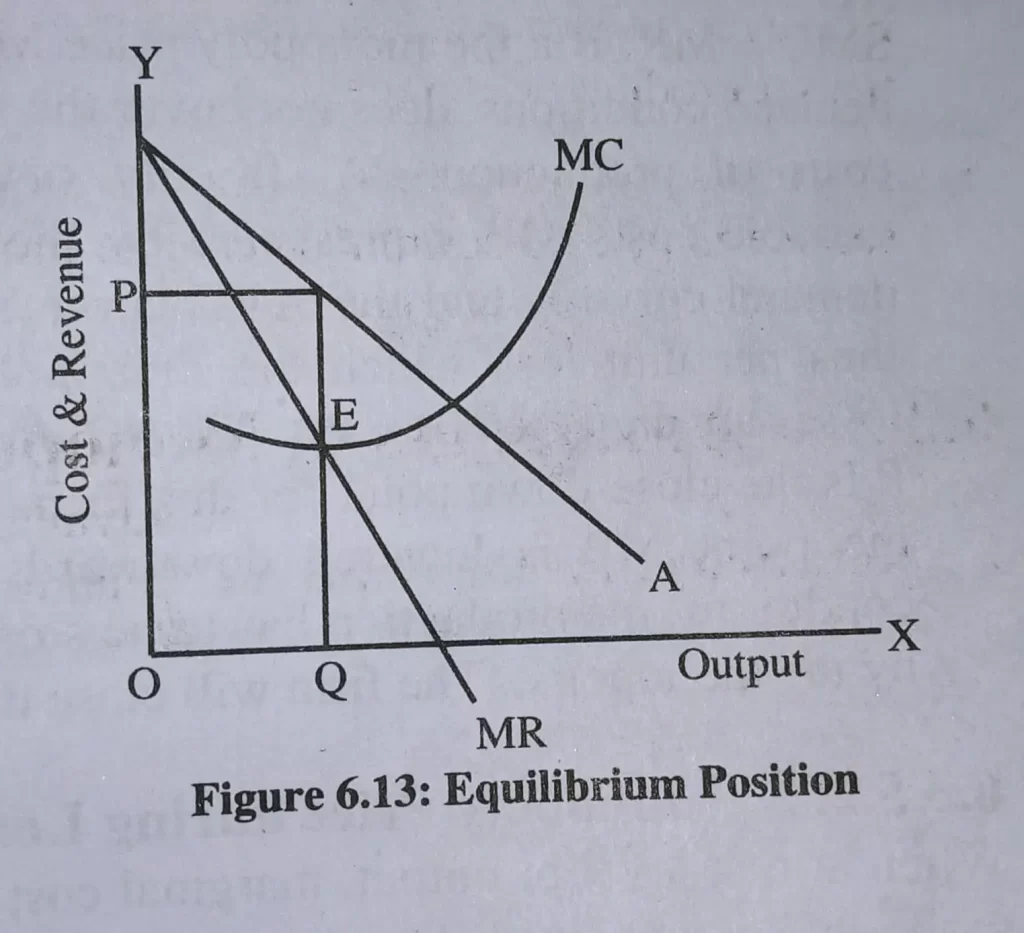
Diagram 6.13 illustrates how when you get to E. The MC curve cuts the MR curve. That means the equilibrium price is OQ, and the equilibrium output equals OQ in E.
Important Assumptions of Monopoly
The following assumptions form the foundation of the analysis for price and output determination in monopoly and profit of monopoly companies:
1. There is only one producer or seller to make a homogeneous item.
2. There are no alternatives to the product.
3. Due to pure competition in the market, the buyer sets the price of every input to purchase it.
4. This is the natural method of a monopolist to maximize profits while keeping the least amount of expenses.
5. There are numerous consumers on the demand side. Nobody is capable of altering the price of the item through their actions. Therefore, the price that the merchandise declares to the customer.
6. The treatment of consumers of all kinds is the same within a Monopoly; a monopolist is charged an equal price for his products and doesn’t charge different costs.
7. Monopoly power is unlimited, and the price of the monopoly is not controllable.
8. There isn’t any risk of competition from other companies.
Price and Output Determination Under Monopoly During Short-Run
The monopoly-owned firm achieves price and output determination under monopoly and equilibrium in the short run at the point when profits are the highest and losses are minimal.
1. Super-Normal Profit
In the short-run, SAC and SMC are the marginal and short-run average revenue curves, while AVC represents the mean variable cost curve for the company. For a variety of reasons, it is the case the AVC curve is not available in figure 6.14. The price and output determination under monopoly. The curve of demand D=AR whose marginal revenue curve can describe as MR. At the point the point. The short-run equilibrium at which the SMC curve cuts into the MR curve below. The monopoly price and output determination is must. The Monopolist can sell OM output at the MP Price. This price is MP. is higher than the cost of short-run MA. The Monopolist makes AP Profit per Unit of Output. So total profits from monopolies include:
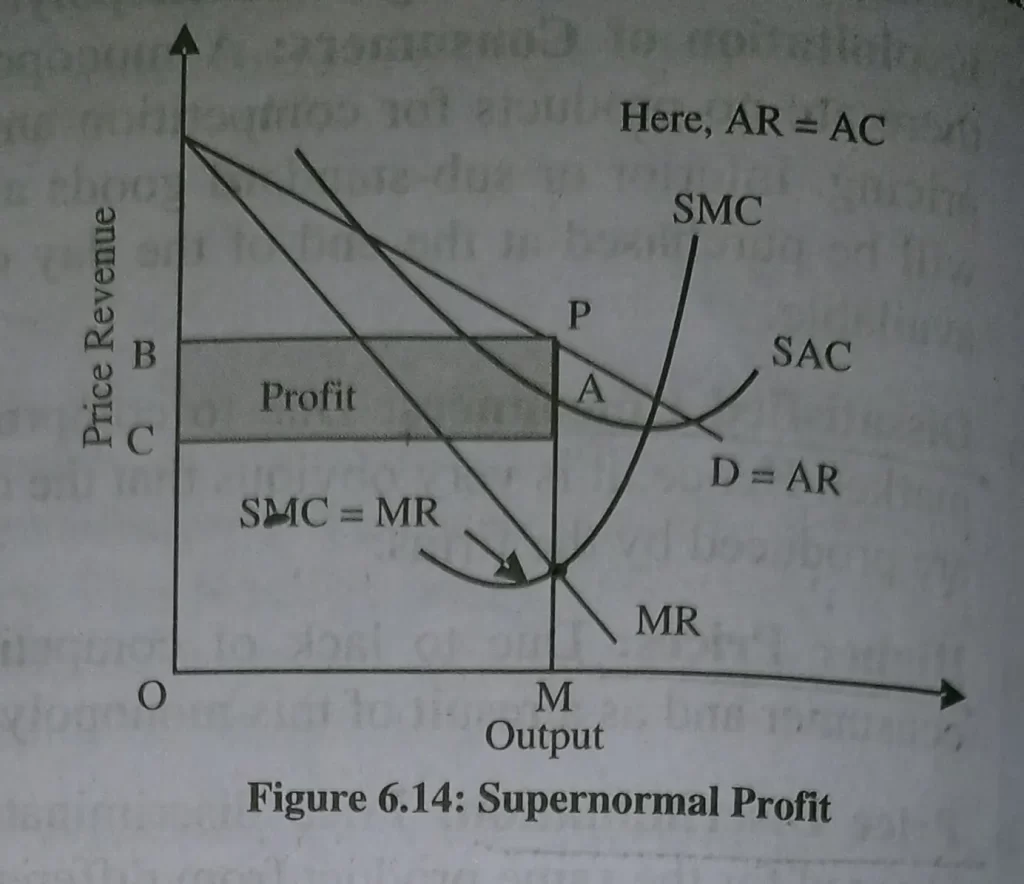
APXCA= The area CAPB.
2. Normal Profit
When monopolists earn just average profits, it can be in their short-run equilibrium shown in figure 6.15. OM output determines by equalization between the SMC curve and MR curve at point E. Its sale is at the MP Price. At this point in production, the company’s owner makes average profits as there is no loss as the SAC curve is tangent with the AR curve. The Monopolist knows that any output beyond OM could result in losses as the SAC curve is greater than the AR curve.
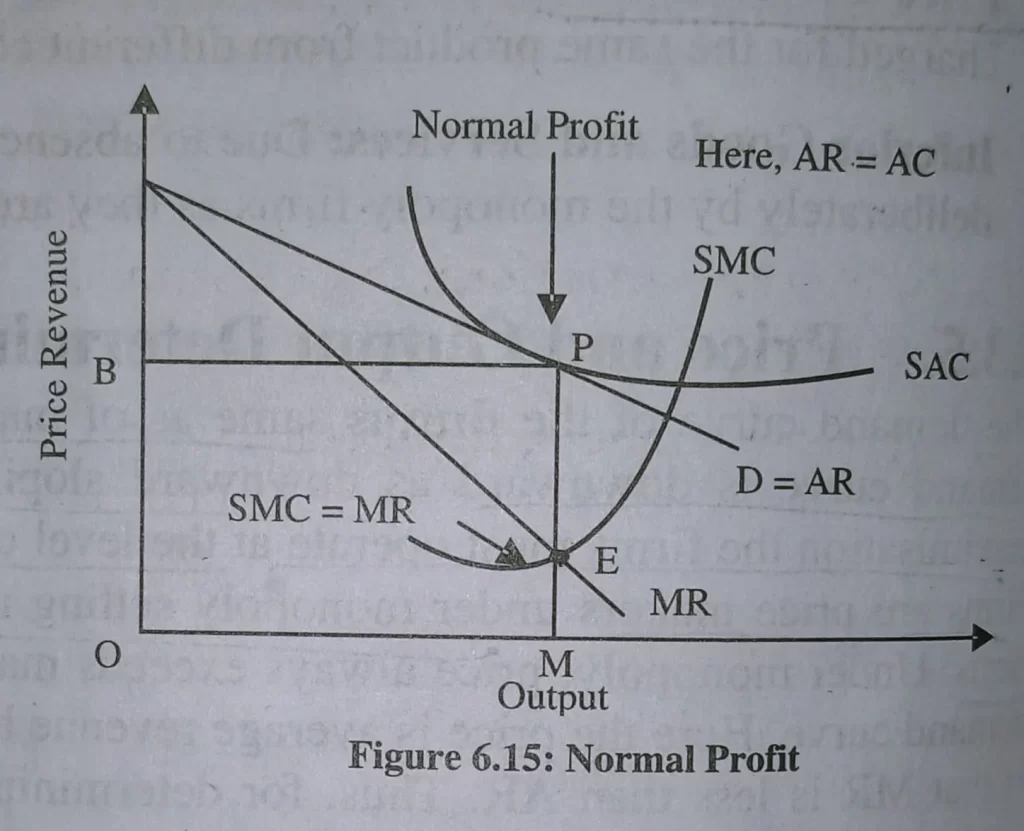
3. Minimum Loss
The Monopolist suffers losses in a short-run scenario, as illustrated in figure 6.16. The equilibrium level E is calculated through the formula SMC=MR. However, the price for monopoly MP, determined by the demand conditions, doesn’t provide the cost of short-run production associated with production PA. The price and output determination under monopoly (with diagram) is as follows. The price only covers variable costs that are average MP. The tangency is the ratio between both the curve of demand D and the AVC curve at point P.
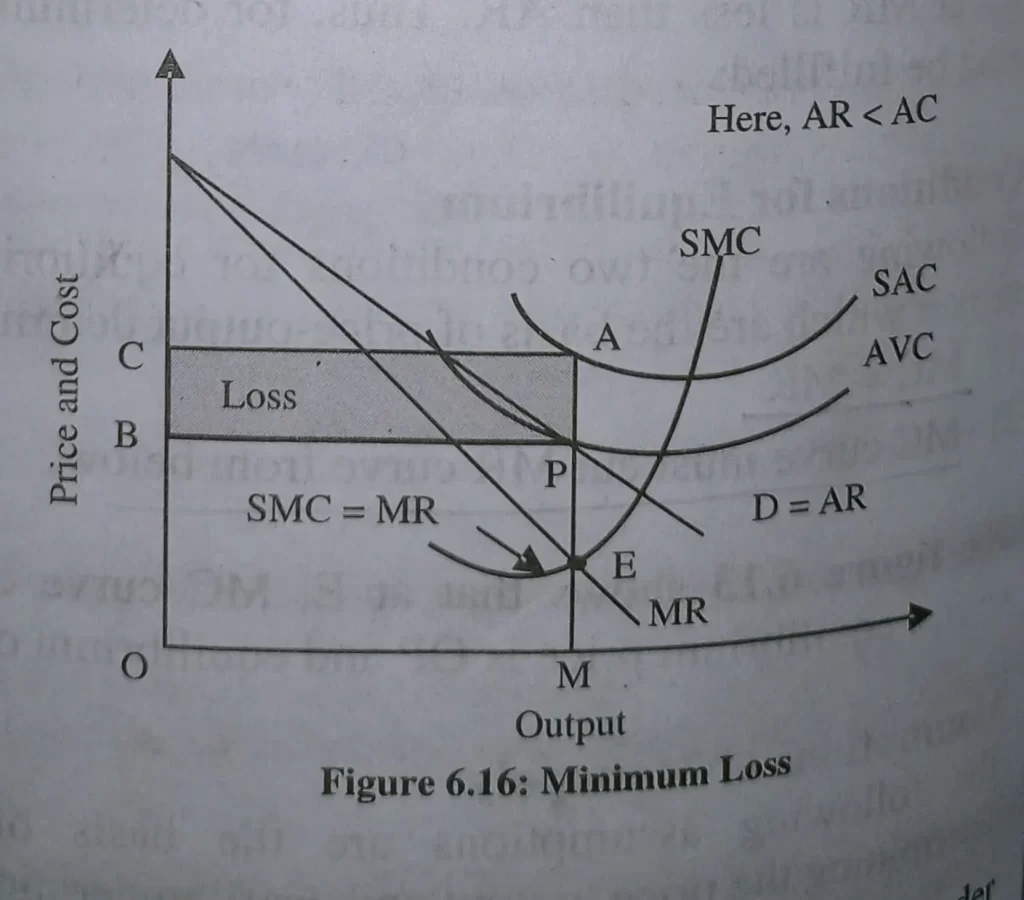
Therefore, the PA is responsible per unit loss for the Monopolist. We can help in price and output determination under monopoly. Total losses equal BPXPA=BPAC BPAC In this illustration, 6.16. P is the point of closure for this company. If the price at the point MP decreases downwards due to market conditions, production must temporarily stop by the Monopolist. The firm is shut down.
Price and Output Determination Under Monopoly During Long-Run
At that point in production, the marginal cost is more significant than the marginal revenue, and the long-term equilibrium of the firm in the monopoly model is achievable. To determine price and output determination under monopoly, you have to use it. Due to the inability of new companies into markets, the income of the monopoly company is not as high in the long term. For price output determination under monopoly it is important to know about the monopoly firm. Despite this the fact that there is no loss for the monopoly firm since, over time, everything is reversible and is recoupable. Supposing that, in the end, the monopoly firm can’t cover the variable cost, the firm should cease production and exit the market.
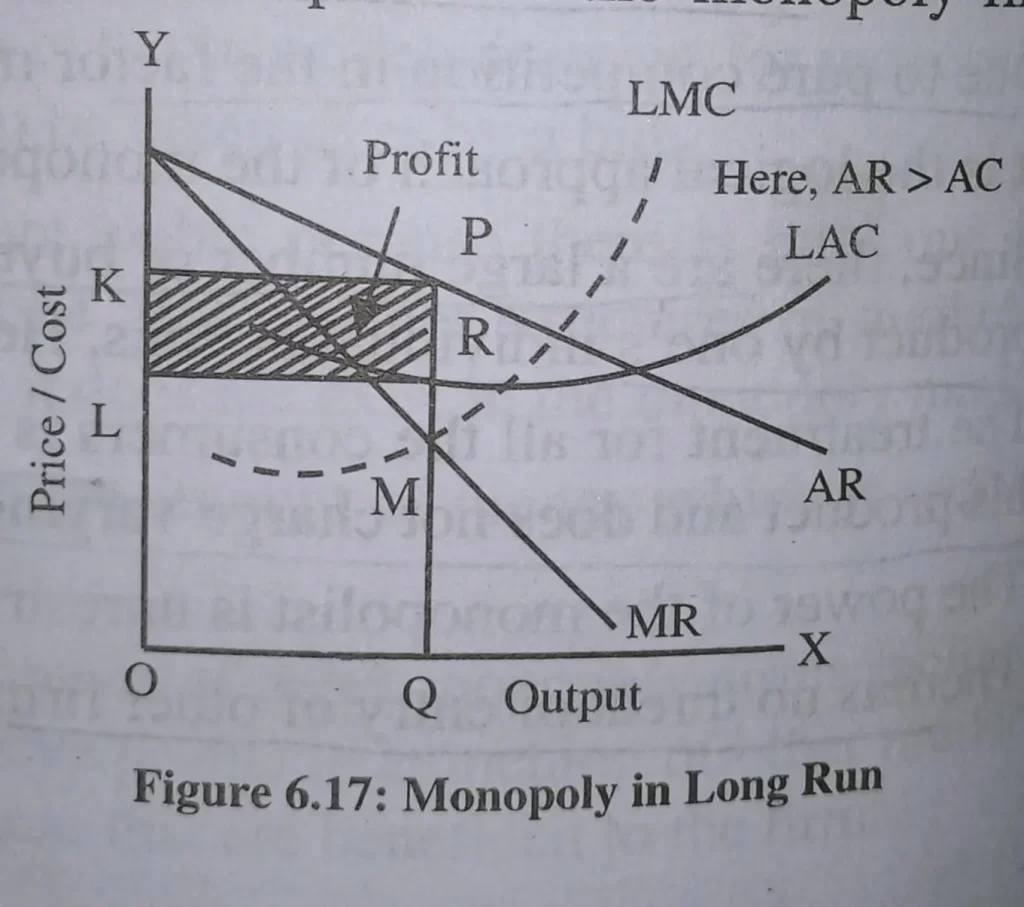
In diagram 6.17, M is the point at which the firm is at equilibrium when LMC for the company merges with MR. OQ output generates the firm in the price of equilibrium OK that is acceptable. The profit PR per unit reaches the production level, OQ, when the company’s average revenue is more significant than its cost of production, and the shading area KLRP is the same as the profit total. For this, price determination under monopoly is important.
Conclusion
The conclusion of price and output willpower under monopoly is that the monopolist seeks to maximize earnings by producing an amount of output wherein MR=MC and charging a rate corresponding to the demand for that amount. However, this can bring about better charges and decreased purchaser surplus, as well as investments in innovation and development.
How Price and Output is Determined Under Monopoly?
Under monopoly, a company determines the price and output itself. There is no competition in the market, so the company has the power to set prices. The company will set prices based on what they think the market will bear and will produce based on what they think they can sell.
How are Price and Output Determination Under Monopoly in Short Run?
Price and output determination under monopoly in the short run is different than under perfect competition. Under a monopoly, the firm has market power and can set the price. The market price and demand curve determine the firm’s output. The firm’s demand curve is downward sloping, which means that the firm will produce less when the price is high and more when the price is low.
How is Price and Output Determined Under Monopoly in Long Run?
In the long run, monopolists determine the price and output according to their profit-maximizing behavior. The monopolist will set the price at the level that maximizes profit, and output will be the quantity that corresponds to that price.

